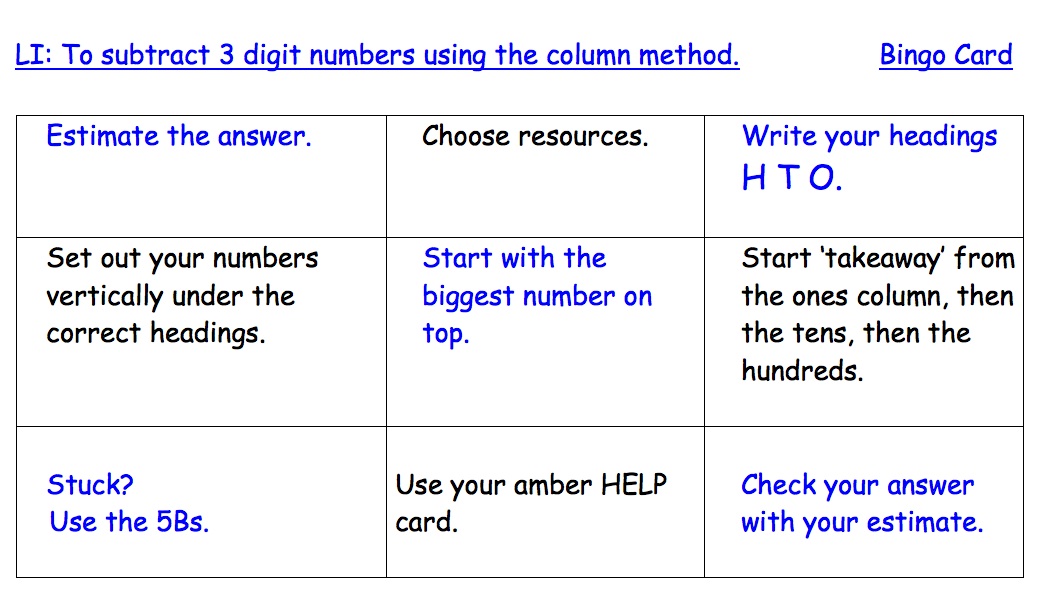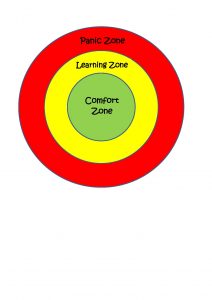What happens when you let children teach column subtraction?
Background:
Shirley Clarke in her book Outstanding Formative Assessment says ‘ask the children to …create their own individual success criteria. This is an effective technique… and enables misconceptions to be illuminated by asking children to explain, in their own words, how the procedure works…’
What we did:
Each child had a blank Bingo card. I asked the children to write down each step they would need to complete a subtraction sum. All to play for. Prizes to be won for a full house.
We shared our findings as a class. The children were bursting to share how they would do it. I spoke very little as they each pitched into the ensuing discussion, building and adding to each other’s ideas.
Outcome
We now have a full bingo card of our class instructions for subtraction using column method. I typed up the children’s instructions and displayed them as a poster on the working wall for the rest of the unit. The children had great success at using and applying the method in their work over the next few days.
Success Criteria Subtraction Bingo

Observations
Some of the children were resilient and bouncy in the face of the blank Bingo card. They threw themselves into the task, chatting as they did it. Others who like to be given a ‘recipe’ which they follow with great success were afraid to mess up the page with something which might turn out to be ‘wrong’. We need to support and nurture these children to take risks with their learning.
Reflections
This week has seen a huge leap in understanding and use of column methods (addition and subtraction). It has been the most fun and fastest learning of the method that I have seen. I’ll be interested to see if the children retain this knowledge when we revisit addition and subtraction next term. How deep has the learning gone? I’m looking forward to getting out their success criteria toolkit next term to see if they add to it/ refine it in any way during the course of the unit. They haven’t included carrying/exchanging in this toolkit but learned how to do that as the week went on. Will it make an appearance next time? Watch this space.
I’d like to get to a stage where every child in the class is okay with making and sharing mistakes. Genuinely seeing them as an opportunity for learning.
This has led on to me trying a ‘glorious mistake’ growth mindset activity. (Glorious Mistake post to follow.)

